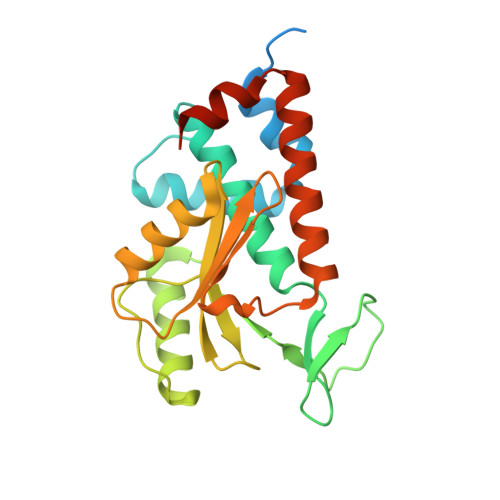Phenyl substituted 3-hydroxypyridin-2(1H)-ones: inhibitors of influenza A endonuclease.
Parhi, A.K., Xiang, A., Bauman, J.D., Patel, D., Vijayan, R.S., Das, K., Arnold, E., Lavoie, E.J.(2013) Bioorg Med Chem 21: 6435-6446
- PubMed: 24055080
- DOI: https://doi.org/10.1016/j.bmc.2013.08.053
- Primary Citation of Related Structures:
4M5U - PubMed Abstract:
Inhibition of the endonuclease activity of influenza RNA-dependent RNA polymerase is recognized as an attractive target for the development of new agents for the treatment of influenza infection. Our earlier study employing small molecule fragment screening using a high-resolution crystal form of pandemic 2009 H1N1 influenza A endonuclease domain (PAN) resulted in the identification of 5-chloro-3-hydroxypyridin-2(1H)-one as a bimetal chelating ligand at the active site of the enzyme. In the present study, several phenyl substituted 3-hydroxypyridin-2(1H)-one compounds were synthesized and evaluated for their ability to inhibit the endonuclease activity as measured by a high-throughput fluorescence assay. Two of the more potent compounds in this series, 16 and 18, had IC50 values of 11 and 23nM in the enzymatic assay, respectively. Crystal structures revealed that these compounds had distinct binding modes that chelate the two active site metal ions (M1 and M2) using only two chelating groups. The SAR and the binding mode of these 3-hydroxypyridin-2-ones provide a basis for developing a new class of anti-influenza drugs.
Organizational Affiliation:
Department of Medicinal Chemistry, Ernest Mario School of Pharmacy, Rutgers, The State University of New Jersey, Piscataway, NJ 08854-8020, USA; Taxis Pharmaceuticals Inc., North Brunswick, NJ, USA.

















